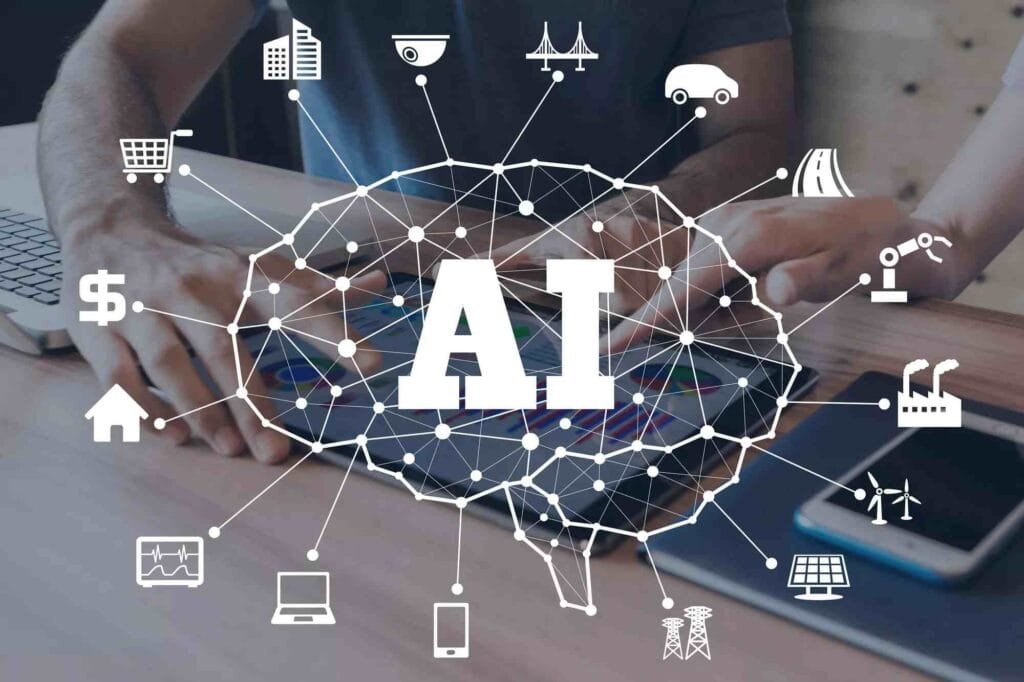In today’s digital world, content is king. But with so much content out there, how do you make sure your audience sees what they really want? That’s where AI comes in. AI helps tailor content to each person, making sure they see what interests them most. This personalized approach keeps readers engaged and coming back for more. Let’s explore how AI is changing the game in content personalization.
Understanding Content Personalization
What is Content Personalization?
Content personalization is about delivering the right content to the right person at the right time. It means showing different content to different people based on their preferences, behavior, and interests.
Instead of a one-size-fits-all approach, personalization makes the experience unique for each user.
Why Personalization Matters
People have different needs and interests. By personalizing content, you make sure your audience finds what they’re looking for, which increases engagement, builds loyalty, and boosts conversions.
When people feel understood, they are more likely to return to your site and become loyal customers.
How AI Enhances Content Personalization
Predictive Analytics for User Behavior
AI-driven predictive analytics play a crucial role in understanding and anticipating user behavior patterns. By analyzing historical data and user interactions, AI can predict future actions and preferences with a high degree of accuracy.
Implement predictive analytics to forecast user behavior and tailor content accordingly. For example, if your data suggests that users typically engage more with video content on weekends, AI can prioritize recommending videos during those times.
This proactive approach enhances user satisfaction and engagement, leading to higher conversion rates.
Natural Language Processing (NLP) for Sentiment Analysis
Natural Language Processing enables AI to analyze and interpret user sentiments expressed in text. By understanding the emotions and opinions conveyed in user comments, reviews, and social media interactions, AI can adjust content personalization strategies dynamically.
Integrate NLP tools to monitor sentiment around your brand and content. For instance, use sentiment analysis to gauge customer reactions to product launches or marketing campaigns.
If sentiment is positive, AI can amplify related content; if negative, it can pivot messaging to address concerns effectively. This proactive approach helps maintain brand reputation and customer trust.
Contextual Personalization Based on User Context
Contextual personalization involves delivering content based on specific contextual cues, such as location, device type, time of day, and browsing history. AI leverages these cues to deliver hyper-relevant content that meets users’ immediate needs.
Utilize contextual personalization to enhance user experiences across different touchpoints. For example, if a user frequently accesses your website via mobile devices in the evening, AI can prioritize mobile-friendly content and promotions during those hours.
This targeted approach maximizes engagement and conversion opportunities based on real-time context.
Adaptive Learning Algorithms
Adaptive learning algorithms enable AI systems to continuously learn and adapt based on user interactions and feedback. These algorithms improve over time, refining content recommendations and personalization strategies to better align with evolving user preferences.
Invest in AI systems with adaptive learning capabilities to optimize content personalization efforts. For instance, leverage machine learning models that can adjust content recommendations based on user interactions, feedback, and evolving market trends.
By continuously refining algorithms, startups can stay ahead of competitors and deliver personalized experiences that resonate deeply with their audience.
Multi-channel Personalization Strategies
AI empowers startups to implement consistent personalization strategies across multiple channels, including websites, mobile apps, email marketing, and social media platforms.
This omnichannel approach ensures a seamless and personalized user experience regardless of the channel or device used.
Develop integrated personalization strategies that span all customer touchpoints. For example, synchronize AI-driven recommendations across your website, app notifications, and email campaigns to provide a cohesive user journey.
By maintaining consistency in messaging and offers, startups can enhance brand loyalty and drive conversion rates effectively.
Practical Applications of AI in Content Personalization
Personalized Email Campaigns
AI can tailor email content to individual preferences. By analyzing user data, AI can determine what type of content each subscriber prefers and send emails that are more likely to be opened and clicked.
For instance, if a user often clicks on emails about tech gadgets, AI can ensure they receive more content on the latest tech trends and products.
Content Recommendations
AI-driven recommendation engines are widely used by platforms like Netflix and Amazon to suggest content based on user behavior. Bloggers and marketers can use similar AI tools to recommend articles, videos, or products on their websites.
This keeps users engaged and increases the time they spend on your site.
For example, if a visitor reads a blog post about digital marketing strategies, AI can recommend other related articles or e-books on marketing tactics. This not only enhances the user experience but also encourages them to explore more of your content.
Personalized Landing Pages
Creating personalized landing pages can significantly improve user experience and conversion rates. AI can help design landing pages that are tailored to individual visitors based on their demographics, behavior, and preferences.
Imagine a visitor comes to your site after searching for “budget travel tips.” An AI-powered landing page could highlight articles, guides, and offers related to budget travel, making the page more relevant and increasing the likelihood of conversion.
Dynamic Content Tailoring Based on User Preferences
AI enables dynamic content tailoring by analyzing user preferences and behaviors in real-time. This capability allows startups to deliver personalized content experiences that adapt instantaneously to individual user interests and interactions.
Implement AI-driven dynamic content platforms that can adjust content presentation and recommendations based on user preferences. For instance, utilize AI algorithms to dynamically rearrange website elements, such as homepage banners or product recommendations, to reflect each user’s browsing history and preferences.
This personalized approach enhances user engagement and increases the likelihood of conversions.
Personalized Product Recommendations
AI-powered recommendation engines can significantly enhance the user experience by suggesting products or content that are relevant to each user’s preferences and past interactions.
Integrate AI recommendation engines into e-commerce platforms or content websites to personalize product suggestions. Utilize machine learning algorithms to analyze user behavior, purchase history, and preferences to deliver tailored recommendations.
For example, recommend complementary products based on a user’s recent purchase or suggest relevant articles based on their reading habits. This personalized approach not only increases user satisfaction but also boosts sales and content consumption.
Enhancing User Engagement with AI

Chatbots and Virtual Assistants
AI-powered chatbots and virtual assistants can provide personalized content recommendations and support in real-time. These tools can engage users in conversations, understand their needs, and offer relevant suggestions.
For instance, a chatbot on an e-commerce site can ask visitors about their preferences and suggest products based on their responses. If a user is looking for running shoes, the chatbot can recommend the latest models, provide reviews, and even offer discounts.
This level of personalized interaction enhances user satisfaction and can lead to higher sales.
AI-Powered Content Recommendations
AI enables startups to offer personalized content recommendations that cater to individual user preferences and behaviors. By analyzing data such as browsing history, search queries, and interaction patterns, AI algorithms can suggest relevant articles, products, or services in real-time.
Implement AI-driven recommendation engines across your digital platforms to enhance user engagement. Leverage machine learning models to understand user preferences and dynamically adjust content suggestions.
For example, personalize homepage feeds based on user interests or recommend related blog posts based on previous reads. By delivering hyper-relevant content recommendations, startups can increase user engagement and encourage longer sessions on their platforms.
Real-Time Content Personalization Across Channels
AI enables startups to deliver real-time, personalized content experiences across multiple digital channels. By analyzing user behavior and contextual data, AI systems can adapt content delivery strategies to match each user’s preferences and current context.
Implement AI-driven content personalization strategies that span various touchpoints. For instance, optimize mobile app interfaces to display personalized content based on user location or browsing history.
Ensure consistency in messaging and branding across websites, social media platforms, and mobile apps to provide a seamless user experience. By leveraging AI for real-time content adaptation, startups can enhance user engagement and drive conversions effectively.
Behavioral Targeting
Behavioral targeting involves using AI to analyze user behavior and deliver personalized content based on that behavior. This technique goes beyond simple demographics and looks at how users interact with your site.
For example, if a user spends a lot of time reading articles about entrepreneurship, AI can target them with more content related to startups, business strategies, and success stories.
This ensures that users see content that is relevant to their interests, keeping them engaged and encouraging them to return to your site.
Adaptive Content
Adaptive content adjusts in real-time based on user interactions. AI tools can help create content that changes according to the user’s actions, ensuring a more personalized experience.
For instance, if a user frequently clicks on blog posts about social media marketing, the website can adapt to show more content on that topic, including related articles, case studies, and tutorials.
This dynamic approach keeps the content fresh and relevant, enhancing user engagement.
Case Studies of Successful AI-Driven Personalization
Netflix
Netflix is a prime example of how AI-driven personalization can enhance user experience. The platform uses AI to analyze viewing habits and recommend shows and movies tailored to individual preferences.
This not only keeps users engaged but also helps them discover new content they are likely to enjoy.
Amazon
Amazon uses AI to personalize product recommendations based on browsing history, purchase history, and user behavior. This personalized approach makes shopping easier and more enjoyable for customers, leading to increased sales and customer loyalty.
Spotify
Spotify leverages AI to create personalized playlists for its users. By analyzing listening habits, Spotify can recommend songs and artists that match individual preferences.
This level of personalization keeps users engaged and encourages them to spend more time on the platform.
Implementing AI-Powered Personalization in Your Strategy

Start with Data Collection
To implement AI-powered personalization, start by collecting data on your users. This includes their behavior, preferences, and interactions with your content.
The more data you have, the better AI can tailor the content to individual needs.
For example, use tools like Google Analytics to track user behavior on your site. This data can include pages visited, time spent on each page, and the type of content that gets the most engagement.
This information is crucial for training AI models to deliver personalized experiences.
Choose the Right AI Tools
There are various AI tools available for content personalization. Choose the ones that best fit your needs and integrate them into your existing systems. Some popular tools include:
- Optimizely: For creating personalized landing pages and content recommendations.
- HubSpot: For personalized email campaigns and marketing automation.
- Dynamic Yield: For real-time personalization and targeting.
Test and Optimize
Implementing AI-driven personalization is not a one-time task. It requires continuous testing and optimization. Monitor the performance of your personalized content and make adjustments as needed to improve user engagement and satisfaction.
For instance, A/B test different versions of personalized emails or landing pages to see which ones perform better. Use AI analytics to understand why certain content works and refine your strategy accordingly.
Overcoming Challenges in AI-Driven Personalization
Data Privacy and Security
One of the major challenges in AI-driven personalization is ensuring data privacy and security. Users are increasingly concerned about how their data is collected and used. It’s essential to be transparent about your data practices and comply with regulations like GDPR and CCPA.
Ensure that your AI tools and data storage systems are secure. Use encryption and other security measures to protect user data. Also, provide clear privacy policies and give users control over their data.
Balancing Personalization and Privacy
While personalization enhances user experience, it’s important to balance it with privacy. Avoid being too intrusive with your data collection and personalization efforts. Ensure that your users feel comfortable and trust your brand.
For example, offer options for users to customize their personalization settings. Allow them to choose what kind of data they want to share and how they want their content personalized. This empowers users and builds trust in your brand.
Ethical Considerations in AI-Powered Personalization
Transparency in Personalization
Transparency is crucial in AI-powered personalization. Be upfront with users about how their data is collected, used, and shared. Provide clear explanations of how AI algorithms personalize content based on user behavior.
For instance, include a privacy policy that outlines your data practices and how AI is utilized for personalization. This transparency builds trust with users and demonstrates your commitment to ethical practices.
Respecting User Preferences
Respect user preferences and give them control over their personalization settings. Allow users to opt-out of personalized content if they choose to. Provide easy-to-access settings where users can manage their preferences regarding data collection and personalized experiences.
For example, offer options to adjust content recommendations or frequency of personalized emails. Respecting user choices enhances their experience and fosters a positive relationship with your brand.
Future Trends in AI-Powered Personalization

Augmented Reality (AR) and Virtual Reality (VR)
AR and VR technologies are transforming user interactions. AI-powered personalization could enhance AR/VR experiences by customizing content based on user preferences and real-world interactions.
For example, AR glasses could overlay personalized content or product recommendations based on the user’s location and interests, creating immersive and tailored experiences.
Advanced AI Algorithms
AI algorithms continue to evolve, becoming more sophisticated in understanding and predicting user behavior. Future advancements may include AI that can anticipate user needs even before they are expressed, providing hyper-personalized experiences.
For example, AI could analyze contextual cues in real-time, such as current location, weather conditions, and recent interactions, to offer tailored recommendations instantly.
Integration with IoT Devices
The Internet of Things (IoT) is expanding, with AI-enabled devices collecting vast amounts of data. Integration of AI-powered personalization with IoT devices can create seamless user experiences across multiple platforms and devices.
For instance, a smart home system could use AI to adjust lighting, temperature, and music preferences based on user habits and preferences, creating a personalized environment.
Implementing AI Ethics in Your Strategy
Regular Audits and Reviews
Regularly audit your AI systems and algorithms to ensure they adhere to ethical standards. Review data practices, algorithm biases, and the impact of personalization on user privacy.
Address any ethical concerns promptly and transparently.
For example, conduct periodic reviews of AI models to identify and mitigate biases that may affect personalized recommendations. Ensure that algorithms are fair and inclusive, respecting diverse user backgrounds and preferences.
Training and Awareness
Train your team on AI ethics and data privacy principles. Foster a culture of ethical AI use within your organization, emphasizing the importance of responsible data stewardship and user trust.
For example, provide ongoing training sessions and resources for employees involved in AI development, marketing, and customer support. Raise awareness about ethical considerations and encourage ethical decision-making in AI-driven initiatives.
Wrapping it up
AI has revolutionized content personalization for startups by offering sophisticated tools to understand user preferences, deliver personalized experiences, and enhance engagement across digital platforms. By leveraging AI-powered content recommendations, chatbots, advanced user profiling, personalized email marketing, and real-time content personalization, startups can foster deeper connections with their audience, drive conversions, and ultimately achieve long-term success in competitive markets.
Embracing AI in content personalization isn’t just about leveraging technology; it’s about creating meaningful, relevant interactions that resonate with users and build lasting relationships.
READ NEXT:




















